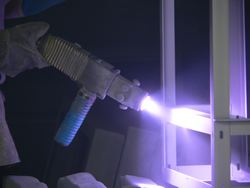Partnerships for thermal spraying
The EU-funded IPACTS(opens in new window) (International partnership for advanced coatings by thermal spraying) project established an EU-Chinese research partnership. The purpose was knowledge transfer and researcher exchange among a consortium of EU and Chinese universities. Primarily, the undertaking produced a new joint laboratory. The third project workshop was organised by this facility. Additionally, the team organised 83 person-months of exchanges among partners. The collaborations produced more than 30 journal papers, and around 10 conference presentations. The project also provided specific training for young researchers. Joint research yielded five new types of software for modelling thermal spray processes, including plasma spraying, cold spraying and HVOF flame spraying. Regarding the effects of solid nanoparticles in HVOF spray processes, the team found that small droplets with high concentrations had high surface tension. The situation created difficulty in initialising the fragmentation process. Vaporisation dominated the process for small droplets, and resulted in residual nanoparticles. Yet, large drops experienced severe fragmentation within the combustion chamber, and sprayed nanoparticles may leave the gun before complete evaporation. Critical velocity was the most important parameter in the cold spray process. However, the team determined that if impact velocity is over a certain threshold, a transition from erosion to deposition occurs. The modelling yielded considerable information useful in cold spraying. Other work included simulation of arc flow behaviour in plasma guns, with reference to flow rate plus heating or cooling of different parts of the guns. The team also developed new processes, including suspension plasma spraying at very low pressure. The method resulted in significant improvements. An additional process includes a dry ice propellant for plasma spraying, which cleans the surface and improves deposition. Lastly, the group developed a high-quality nano-deposition rate for titanium dioxide. The room temperature technique enables coating of dye-sensitive solar cells with the oxide, potentially leading to efficiency improvements. The IPACTS project helped build mechanisms for long-term EU-Chinese industrial research partnerships. Certain resulting applications, including dry ice plasma spraying, offer potential application in other thermal spray processes.







